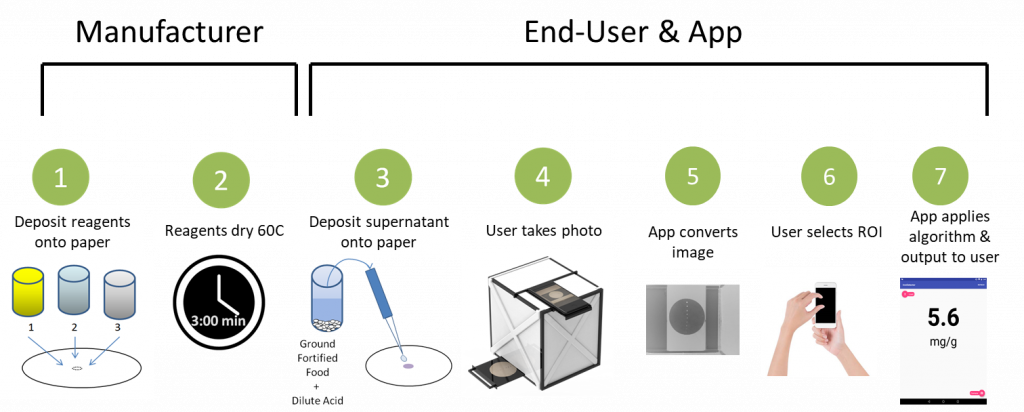Food fortification research addresses profound global problem
The Global Alliance for Improved Nutrition (GAIN) recently released the 2018 Global Nutrition Report, focusing on malnutrition, a problem that can take many forms. Estimates from the World Health Organization in 2006 suggested that at least one third of the global population suffers from some form of micronutrient deficiency, but concrete numbers are hard to come by. The most common deficiencies include iron, zinc, Vitamin A, folate and iodine.
Food fortification offers a mechanism to address micronutrient malnutrition around the world. But, in countries where cereals markets are not well regulated, the inability to verify the nutritional quality of foods can undermine fortification efforts. ADMI-funded researchers are working to enable easy verification of nutrient content in cereals to support improved postharvest management and greater nutritional security.
At the University of Illinois, Dr. Juan Andrade leads the Illinois Global Nutrition Technology (IGNiTe) lab, which focuses on developing and implementing technologies and strategies to address micronutrient malnutrition. Andrade’s team is working on a low-cost, paper-based assay to detect iron and other micronutrients in fortified foods.

Despite wide implementation across most low- and middle-income countries, fortification efforts are undermined by inadequate monitoring and evaluation systems. Many countries require food companies to fortify staples such as salt, milk, corn, rice, and wheat flours to address micronutrient gaps, especially among vulnerable groups. However, the lack of laboratory capabilities, inexpensive equipment, and specialized personnel limit the ability of governments and food companies to assess the quality of fortified foods and the potential adulteration of foods entering local markets.

To address this challenge, Andrade’s team has developed Nu3Px, a low-cost sensing technology consisting of a paper-based, colorimetric assay, coupled with a smartphone camera and an app for the quantification of iron in fortified flour. With funds from ADMI, the team will develop the software and further validate the technology for the quantification of iron in nixtamalized corn flour. A member of Andrade’s team, Anna Waller, received a Fulbright Fellowship to continue the validation of this technology in collaboration with Professor Marcela Gaytan from the Universidad Autónoma de Querétaro in Mexico. Ultimately, technology like Nu3Px can ensure that fortified food is correctly identified and valued in the market and can enable food fortification to have even greater nutritional impact for vulnerable populations.
Waller created a video about the work available here.
For more information about Andrade’s work at the University of Illinois, visit his lab’s webpage.
References
WHO, 2006. WHO Guidelines on Food Fortification with Micronutrients. Geneva: World Health Organization.



Add Comment